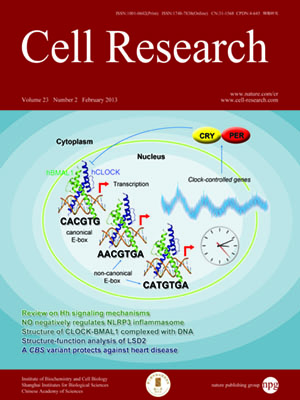
Volume 23, No 2, Feb 2013
ISSN: 1001-0602
EISSN: 1748-7838 2018
impact factor 17.848*
(Clarivate Analytics, 2019)
Volume 23 Issue 2, February 2013: 182-185
RESEARCH HIGHLIGHTS
Chronic lymphocytic leukemia: A tale of one or two signals?
Nicholas Chiorazzi1 and Dimitar G Efremov2
1Karches Center for Chronic Lymphocytic Leukemia Research, The Feinstein Institute for Medical Research, Hofstra North Shore-LIJ School of Medicine, 350 Community Drive, Manhasset, NY 10030, USA
2Molecular Hematology, International Centre for Genetic Engineering and Biotechnology, CNR Campus “A. Buzzati-Traverso”, Rome, Italy
Correspondence: Nicholas Chiorazzi, Dimitar G Efremov(nchizzi@NSHS.edu; efremov@icgeb.org)
The significant correlation between disease aggressiveness and the gene and protein structures of the B-cell receptors (BCRs) expressed on chronic lymphocytic leukemia (CLL) cells, together with the evidence for chronic activation of the BCR pathway, have led to the hypothesis that this leukemia initiates and progresses by selecting normal B lymphocytes reactive with a restricted set of (auto)antigens. A study recently published in Nature identified a novel signal-initiating interaction between the third complementary determining region of the IG heavy chain variable domain (HCDR3) and an epitope in the second framework region (FR2) that appears to be unique to CLL B cells and that calls into question the need for classical antigen binding in the activation and expansion of the leukemic cells. These findings are discussed in the context of available information about the antigen reactivity of CLL B cells and its potential role in clonal survival and drive.
Cell Research (2013) 23:182–185; doi:10.1038/cr.2012.152; published online 13 November 2012
FULL TEXT | PDF
Browse 2411


